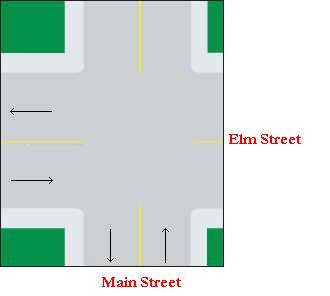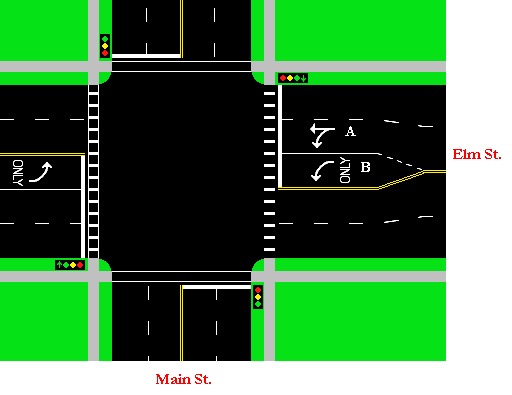True/False
Indicate whether the
statement is true or false.
|
|
|
1.
|
Trucks with a high center of gravity may roll over on curves even if they are
following the posted speed limit.
|
|
|
2.
|
Wet brakes help to cool the brakes and make them operate more
effectively.
|
|
|
3.
|
The standard advance warning sign for a railroad-highway crossing is placed
ahead of the crossing. It is a round yellow sign with a large black “X” and
the letters “RR” in black.
|
|
|
4.
|
Tire fires can be caused by BOTH under-inflated tires and by dual tires that are
touching each other.
|
|
|
5.
|
It is always safe to operate your vehicle if you are within legal maximum weight
limits.
|
|
|
6.
|
A truck should have at least one (1) reflective triangle in case on an
accident.
|
|
|
7.
|
Warning devices are to be placed 10 feet, 100 feet and 200 feet to the rear of a
vehicle that is disabled on a divided highway.
|
|
|
8.
|
A good way to find out how many seconds of space you have in front of your
vehicle is to wait until the vehicle in front of you passes a landmark, and then count the seconds
until your vehicle passes the same landmark.
|
|
|
9.
|
When driving a truck in hot weather, check tires every 2 hours or 100
miles.
|
|
|
10.
|
If you have to leave the road onto the shoulder in a driving emergency, avoid
braking until your speed is under 50 mph.
|
Multiple Choice
Identify the
choice that best completes the statement or answers the question.
|
|
|
11.
|
Which of the following is NOT recommended when you drive through a work
zone?
a. | Slow down | b. | Get through it as fast as you can to avoid slow
traffic | c. | Use you four way flashers to warn drivers behind you | d. | Warn drivers by
putting on your brake lights |
|
|
|
12.
|
Which of the following is an example of using in-vehicle communication equipment
cautiously?
a. | If you have to place a call, pull off the road where it is safe | b. | Turn your cell phone
off while driving | c. | Use a hands-free device | d. | All of the
above |
|
|
|
13.
|
You should use high beams:
a. | Only in an emergency | b. | Only when you are tired | c. | Whenever it is safe
and legal to do so | d. | a and b only |
|
|
|
14.
|
If an oncoming driver drifts into your lane, it is usually best to
steer:
a. | to the right | b. | to the left | c. | straight
ahead | d. | none of the above |
|
|
|
15.
|
Countersteering is:
a. | practice steering to prepare for an emergency | b. | counting while
steering | c. | steering while backing | d. | turning the wheel back quickly after steering
past a hazard |
|
|
|
16.
|
Which of the following is a cause of truck fires?
a. | spilled fuel after an accident | b. | electrical system short-circuits due to damaged
wire insulation or loose connections | c. | Loose fuel connections | d. | All of the
above |
|
|
|
17.
|
Water cannot be used to put out a ________ fire.
a. | wood | b. | electrical | c. | gasoline | d. | b and c |
|
|
|
18.
|
A flatbed vehicle is loaded with very little weight on the drive axle and a lot
of weight on the trailer axles. What may result?  a. | Poor traction | b. | Damage to the drive axles | c. | Better vehicle
handling | d. | None of the above |
|
|
|
19.
|
You are driving a long tractor-trailer that makes wide turns. You want to
turn left from Main street onto Elm Street. Both streets are two-lane, two-way streets.
Review the following diagram.  What should you do? You
should: a. | Begin turning your vehicle left as soon as you enter the
intersection. | b. | Begin turning your vehicle left once you are half way through the
intersection. | c. | Begin the turn with your vehicle in the left lane of Main Street. | d. | None of the
above. |
|
|
|
20.
|
You are driving a long vehicle that makes wide turns. You want to make a
left turn from Elm Street onto Main Street. There are two left turn lanes on Elm Street (See
lanes “A” and “B” in the diagram below). Main Street is a four -lane
street with two lanes in each direction.  What should you
do? You should: a. | Use left turn lane “A” | b. | Use left turn lane
“B” | c. | Start in “A” and swing into “B” just before entering the
intersection. | d. | Start in “B” and swing into “A” just before entering the
intersection. |
|
|
|
21.
|
To correct a drive-wheel braking skid, you should:
a. | Stop braking, turn quickly, and countersteer. | b. | Increase
braking. | c. | Increase braking, turn quickly, and countersteer. | d. | Accelerate. |
|